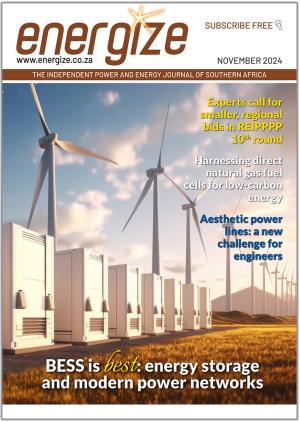South Africa’s electricity supply industry is undergoing several reforms simultaneously, affecting both the industry’s structure and the country’s energy mix. These changes include significant growth in inverter-based generation resources such as solar PV and wind as well as the planned shutdown of the majority of South Africa’s coal fleet over the next two decades.
This will result in a reduction in the amount of synchronous generation on the South African grid and the grid services these generators provide, says a Cigre Science and Engineering research paper titled “Repurposing Coal Power Station Generators as Synchronous Condensers on the South African Grid”.
The paper investigates the technical, operational, and regulatory considerations for converting decommissioned coal-fired power station generators into synchronous condensers to ensure the reliability of the national grid while supporting the integration of renewable energy.
“Alongside this increasing role of renewable generation, many of Eskom’s coal generation power systems are reaching the end of their design life and will soon be retired. This development affects the operation of the power system, particularly the provision of services required for reliability (adequate reserve, voltage, and frequency) by synchronous generators,” says the report.
Synchronous condensers provide reactive power and enhance voltage regulation without generating active power. The paper explains that synchronous generators in coal, nuclear, and gas power stations provide essential grid services beyond their nameplate capacity, including short circuit power, true inertia, instantaneous mechanical responses, reactive power compensation, dynamic MVARs for voltage stability, and reference voltage sinus waves for grid-following inverters, without which the grid could not operate.
“Synchronous condensers have a long history of being used for grid compensation and are excellent at providing reactive power as well as frequency stability and short-circuit current. Due to the cost, maintenance overhead and the introduction of solid-state compensators, the industry shifted away from using synchronous condensers for voltage control on the grid,” says the paper.
In recent years, several utilities worldwide have reverted to this traditional technology due to its inertial properties and are now deploying synchronous condensers in response to increased renewable energy penetration and declining electrical system inertia.
The conversion of coal power station generators into synchronous condensers involves relatively minimal modifications. According to the paper, the process generally requires de-coupling the turbine, integrating starting systems, and ensuring adequate cooling mechanisms. This allows the generators to transition from producing electrical power to providing reactive power support
“The need for a synchronous condenser is driven by a technical transmission network requirement. System strength and inertia are by-products of synchronous generators and a decline in the number of synchronous generators will affect both the need for inertia and system strength. In the absence of any new synchronous generation being added to the network, an inertia and system strength shortfall is unavoidable in the future,” says the paper.















